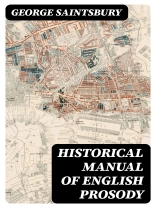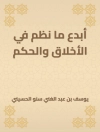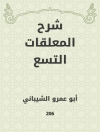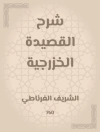In ‘Historical Manual of English Prosody, ‘ George Saintsbury provides a comprehensive exploration of English metrical tradition from its origins to the contemporary period. The work meticulously analyzes the principles of rhythm, rhyme, and meter across various epochs of English literature, showcasing the evolution of poetic form. Saintsbury’s eloquent prose and scholarly precision illuminate the aesthetic and structural dimensions of poetry, positioning the manual as both a critical resource and an engaging read for scholars. His contextualization of prosody within historical movements and literary contexts enriches our understanding of its role in shaping English verse. George Saintsbury, an esteemed literary critic, historian, and educator, held significant interests in linguistics and poetry. His extensive academic background, marked by a profound appreciation for the English literary canon, especially underscores the motivations behind this manual. Influenced by his experiences with teaching and literature, Saintsbury aimed to create a systematic guide that would foster a deeper appreciation for the intricacies of poetic construction while serving as a reference for poets and scholars alike. ‘Historical Manual of English Prosody’ is an invaluable text for anyone seeking to grasp the nuances of English verse. It is particularly recommended for students of literature, poets, and literary enthusiasts who wish to deepen their understanding of metrical composition and the dynamics of poetic rhythm throughout history.
Sobre el autor
George Saintsbury, born on October 23, 1845, in Southampton, England, was a distinguished literary historian and critic, renowned for his erudite scholarship in the field of English literature. Saintsbury’s profound impact on literary criticism is best manifested in his comprehensive work, the ‘Historical Manual of English Prosody’ (1910), which provides a meticulous examination of the rhythmic and metric patterns in English poetry. A professor of rhetoric and English literature at the University of Edinburgh, he held the prestigious position from 1895 to 1915. Saintsbury’s literary approach combined historical context with structural analysis, a method that became a hallmark of his extensive oeuvre. His scholarship is characterized by an astute attention to detail and an encyclopedic knowledge of literary forms, making him a seminal figure in the study of English prosody and poetics. Renowned for his lucid prose and scholarly rigour, Saintsbury penned numerous books on literature, wine, and history, helping shape the way English literature was studied and appreciated in the early 20th century. He passed away on January 28, 1933, but his contributions continue to influence literary scholarship and pedagogy.












